Best Binoculars for Astronomy [My Top Picks + Guide]
Whether you’re an avid astronomy enthusiast or a casual stargazer, it’s easy to become enamored by the beauty of a clear night sky. There are countless celestial objects to discover, and while many of these natural wonders can be observed with the unaided human eye, quite obviously you will be able to see much more with a quality pair of binoculars for astronomy.
Interestingly enough, binoculars are often overlooked as a go-to stargazing instrument, but seasoned observers typically keep a pair handy.
Binoculars offer some distinct advantages over telescopes: They’re lighter and easier to transport, and they’re generally less expensive. Not only that, but binoculars also allow you to stargaze using both eyes, which is a far more natural method of observation. True indeed, binoculars are smaller and they offer less magnification power than telescopes, but they do have a wider field of view, which can make it a lot easier to spot celestial objects in the vast expanse of a night sky.
As you can imagine, not all binoculars are created equal, and there are so many different choices available that it can seem overwhelming trying to choose the right pair for your astronomy adventures. After all, you have to consider several different factors such as prism glass type, field of view, image magnification, lens size, optical quality, waterproofing, durability and much more.
That’s what this guide is all about: I have invested countless hours in researching and testing to find the best binoculars for astronomy, and I am ready to present the results of my labour here for you. To provide the most well-balanced information, I have decided that it would be best to separate my findings into three categories:
- Small binoculars: These are the standard handheld kind that are highly portable and easy to use.
- Medium binoculars: These can still be handheld, but they are slightly more difficult to negotiate, so you have to make sure that you maintain a tight brace when using them. Medium binoculars also offer a more powerful level of magnification.
- Large binoculars: You will have to mount these on a tripod (or counter-weighted arm) in order to keep them stable when using them. Large binoculars naturally feature larger lenses, giving you a fantastic field of view along with powerful magnification.
So, without any further delay, here are my top picks for each category:
Best Large Binoculars on the UK market [Updated for 2020]
Winner: Celestron 71017 25 x 100 SkyMaster Porro Prism Binoculars
If you’re looking for a pair of high-quality binoculars that will render jaw-dropping images of long-range objects in low-light conditions, look no further than these Celestron 71017 25×100 SkyMasters.
With 25x magnification and a giant 100-millimeter objective lens, you won’t have any problems locating and zooming in on deep-space objects with surprising crispness and clarity. These binoculars are the perfect fit for astronomical viewing, although they can be used for long-range terrestrial viewing as well.
Due to their robust size, you will get the best use out of them by mounting them on a tripod; fortunately, this is no problem at all, because these binoculars feature and integrated tripod adapter rod.
With multi-coated optics and individual eyepiece focus, these Celestron 71017 SkyMasters offer clear, ultra-sharp views that will help you get the most out of your stargazing sessions.
Key Features:
- 25x magnification
- Porro prisms
- 100mm objective lens offers outstanding image brightness and clarity
- Multi-coated optics provides sharp, clear views
- Sealed with a protective rubber coating for optimal grip
- Can be used for long-range astronomical or terrestrial viewing
Runner-Up: Celestron SkyMaster 20×80 Binoculars
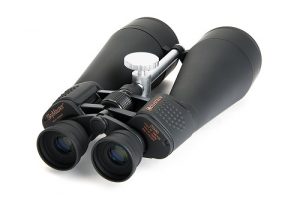 These Celestron SkyMaster 20×80 binoculars offer well-balanced viewing and handling, with an optimal mix of weight, size and optics.
These Celestron SkyMaster 20×80 binoculars offer well-balanced viewing and handling, with an optimal mix of weight, size and optics.
One of the hallmarks of great design is the ability to facilitate intuitive use, and these SkyMasters accomplish this beautifully. They were obviously designed with the user experience in mind, offering a comfort and simplicity of use along with rugged and robust construction.
With a generous 80mm objective lens and powerful 20x magnification, you won’t have any problems zooming in on distant celestial objects, and the protective rubber coating of these SkyMasters allows for ultra-firm grip and very capable handling. Whether you’re trying to get a closer view of the moon or the Andromeda Galaxy, you will appreciate the razor-sharp views that these binoculars afford.
Key Features:
- Large 80mm objective lens offers optimal image brightness in low-light conditions
- Multi-coated optics for razor-sharp image quality
- BAK-4 prism glass
- Wide field of view offers ultra-sharp focus
- 20x magnification is perfect for viewing long-range celestial objects
Best Medium Binoculars
Winner: Celestron 72022 SkyMaster 8 x 56 Binoculars
Weighing in at a very modest 35 ounces (2 lbs. 3 oz.), these Celestron 72022 SkyMaster 8 x 56 binoculars allow for easy handling and holding, even for extended periods of time.
They offer a generously-sized 7mm exit pupil (i.e., the size of the image that you see when looking into the binoculars), with precisely constructed discs that reflect the perfectly round quality of the Porro prism glass within the binoculars.
Inferior binoculars will typically display some type of angular fall-off, but these SkyMasters retain superb image quality throughout, making them virtually perfect for astronomy.
In addition, the binoculars have been wrapped and sealed in high-quality rubber, which means that they offer a comfortable grip that won’t slip around in your hands.
Key Features:
- 56-millimeter aperture is ideal for low-light conditions
- BAK-4 prisms comprised of high-quality glass
- Waterproof construction
- Solid build and non-slip grip
Runner-Up: Olympus Binocular 10×50 DPS-1
These binoculars feature 10x magnification and generous wide-angle views that allow you to enjoy fantastic stargazing escapades. With optics powered by standard Porro prisms, you won’t have to worry about fussing with shabby image quality.
Not only will these Olympus 10×50 binoculars deliver crisp, clear and bright images, but the views that these binoculars afford almost seem to assume a 3D quality.
The focus knob is in the center, and it delivers smooth, fast and crisp rendering of objects. The 50-millimeter aperture works very well in low-light conditions, making them a pleasure to use for astronomy. As you scan the night sky, you will appreciate how bright and crisp the images are that the Olympus 10×50 affords.
Key Features:
- 10x magnification provides outstanding zoom
- Smooth and fast focusing capability
- Expansive field of view (371 feet/1000 yards)
- 30.1-oz. weight affords easy handling
Best Small Binoculars
Winner: Olympus 8 x 40 DPSI Binoculars
A friend of astronomers and birdwatchers alike, the Olympus 8 x 40 can perform fantastic optical work, offering a fantastic field of vision along with razor-sharp image clarity and superb focus.
With 8x magnification and an extra-wide field of view, these binoculars give you plenty of stargazing power to make the celestial objects of your choice seem that much closer. The Olympus 8 x 40 DPSI features a 40mm aperture, which means that the diameter of each of the lenses that are farthest from your eyes is 40 millimeters.
This smaller aperture size along with the lightweight build of these binoculars (only 25 ounces in weight) allows you to comfortably hold them up for prolonged periods of time without too much shaking or tremor.
Key Features:
- Wide field of view
- Lightweight and easy to handle
- Sure-grip rubber coating and high-quality finish
- Aspherical optics ensures distortion-free viewing
Runner-Up: Nikon Aculon A211 8×42 Binoculars
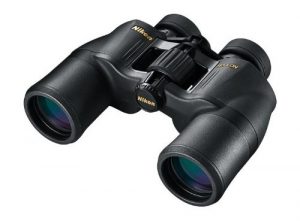 These Nikon Aculon A211 8 x 42 binoculars offer exceptional durability and a generously-sized objective lens for your stargazing efforts.
These Nikon Aculon A211 8 x 42 binoculars offer exceptional durability and a generously-sized objective lens for your stargazing efforts.
These binoculars offer the advantage of multilayer-coated lenses, which help to bring bright objects into sharper focus.
According to Nikon’s own product description, the word “ACULON” is a portmanteau made up of the words “accuracy” and “precision”, and those two terms characterize what you can expect from these very capable binoculars. Their rugged construction offers a nice, steady feel, and they are lightweight enough to hold for several minutes at a time without making your arms ache.
Key Features:
- No image distortion due to aspherical eyepiece lenses
- Large objective lens is perfect for nighttime viewing
- Can perform well in a wide variety of lighting conditions
- Rubber armour provides comfortable grip and solid shock resistance
Buying Guide and Key Considerations
When choosing a good pair of binoculars for astronomy, there are quite a few factors that you must take into account, but do your best not to become overwhelmed with too many technical details.
Out of the many different specifics that can be considered, there are only a handful that are really going to make a huge difference in your viewing experience. With an emphasis on the essentials in mind, below are some of the primary considerations you should keep in mind when shopping for a quality pair of binoculars.
- The two magic numbers: Binoculars are typically categorized by two main numbers: The magnification and the nominal aperture size. For example, a pair of 8×40 binoculars means that they have a magnification of 8 and and an aperture size of 40 millimeters. In other words, these binoculars can magnify an image up to 8 times its actual size, and the size of the circular lenses that are farthest from your eyes (on the back side of the binoculars) is 40 millimeters in diameter. This is a standard designation that can give you a good clue as to how powerful the binoculars are, as well as how much they might weigh. Generally speaking, the larger the aperture size (that number after the “x”), the larger the binoculars themselves will be.
- Size: Speaking of size, bear in mind that binoculars that would be considered “small” for astronomy purposes would probably fall under the category of “medium” size for bird watching or other terrestrial viewing activities. While small binoculars can be easily held by hand for several minutes at a time, larger binoculars will typically require the assistance of a tripod due to their heavier weight. So if you’re going to purchase a pair of binoculars with a large aperture size (e.g., 100mm), be prepared to purchase an accompanying tripod for optimal viewing comfort. It should also be noted that larger binoculars are not fitted for terrestrial viewing applications due to their narrow field of view. In fact, the larger-sized binoculars have telescope-like characteristics in terms of resolution, optical quality and magnification.
- Exit Pupil Size: Again, the exit pupil (a.k.a. “eye ring”) is basically the disc-shaped image that is formed by the objective lens. A quick way to determine the size of the exit pupil is to hold your binoculars up to a light source, and see how big the light discs are that shine through the eyepieces. Ideally, the exit pupil should be no larger than the pupil of your eye.
- Prism Type: There are two main types of prisms used in astronomical binoculars: Porro and Roof. Without getting into too much technical detail, the main difference between the two prism types is how the light path is manipulated. Porro prisms are generally considered to be the better choice for astronomical viewing, not only in terms of optical quality, but also in terms of value for the money.
- Handling: What good is a pair of binoculars with high-quality lenses if they’re uncomfortable to hold or handle? Try to choose binoculars that feature some type of rubber coating that not only provides a solid non-slip grip, but also offers ample protection from the elements.
Frequently Asked Questions
Q: How do binoculars work?
A: Binoculars are essentially two individual telescopes that are aligned to deliver a uniform 3D image. Two objective lenses at the end of the binoculars collect light from an object such as an animal or the moon, while the two eyepieces on the other end magnify the image to make it appear closer.
Prisms between the two lenses ensure you get an image that’s the right way up.
Q: How to focus binoculars
A: Close your right eye and look at an object about 50m away with just your left eye. Adjust the central focusing ring until the object appears sharp with no blurriness.
Now close your left eye and look at the same object with just your right eye. Adjust the dioptre adjustment ring on the right tube until the object appears sharp. Now the object should appear sharp to both eyes. As you look at objects at varying distances, only use the focusing ring to adjust focus.
Q: How to look through binoculars with glasses
A: To enjoy the full field of view with your glasses on, twist the eyecups or fold them down such that they are at their lowest position. This brings your eyes closer to the eyepiece lenses.
Q: What is a good binocular strength?
A: It all depends upon which celestial objects you plan on viewing with your binoculars. If you’re interested in studying the moon, either of the two small binoculars mentioned above can provide excellent optical quality for a viewing an object that is as relatively “close” as the moon.
On the other hand, if you’re interested in observing deep space objects such as a distant nebula or even the planet Saturn, you would be much better served by choosing binoculars with a higher magnification, such as the Celestron 71017 25×100 SkyMasters mentioned above.
Q: Can you see the moons of Jupiter with binoculars?
A: Fortunately, you can view many of the larger moons of Jupiter (e.g., Ganymeade, Io, etc.) with a pair of medium-sized binoculars such as the Celestron 72022 8×56 SkyMasters mentioned above. There is one caveat, however: They will be more difficult to spot if you live in an area with significant light pollution.
Q: What is BAK-4 glass?
A: It is a type of designation for the optical glass that is used for prisms in binoculars. The acronym BAK itself stands for “BaritleichKron” (“Barium Crown” in German). BAK-4 glass has a higher refractive index (the measure of how light behaves when passing through an object) than BK7 glass, which is another popular type of prism glass. Most high-end binoculars tend to use BAK-4 prisms to deliver a greater level of optical quality.
Q: What level of magnification is best?
A: This will largely depend upon what method you plan to use to stabilize the binoculars. If you want to hold your binoculars by hand, then choosing a lower level of magnification (e.g., 7x or 8x) might be preferable. Once you get into the higher levels of magnification (e.g., 20x or 25x), you’re going to find it difficult to hold the binoculars steady without using some type of stabilization device, such as a tripod.
This is not to mention the fact that the higher magnification binoculars are typically a lot heavier. If you intend to study deep space objects, then a higher level of magnification–with adequate image stabilization–will be necessary.
As you can see, choosing the right pair of binoculars for your stargazing efforts requires quite a bit of careful consideration. Be sure to keep the above guide in mind to help you enjoy all of the beauty and wonder that the “final frontier” has to offer!
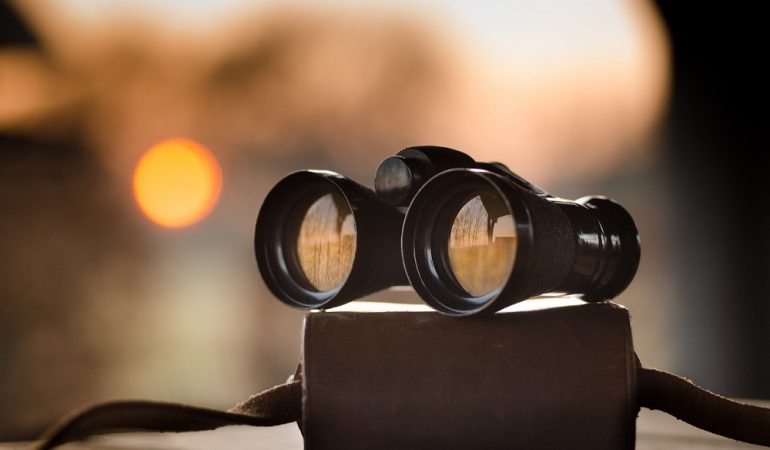
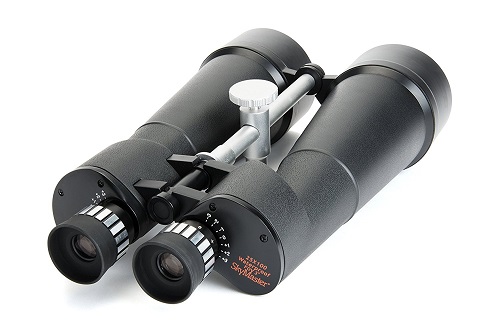
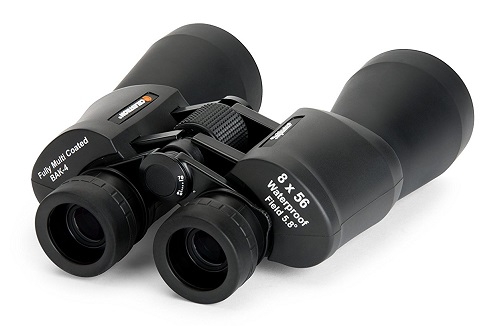
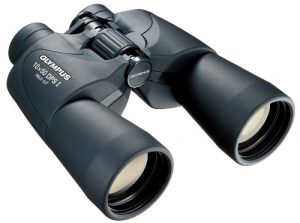
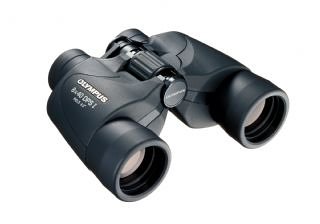
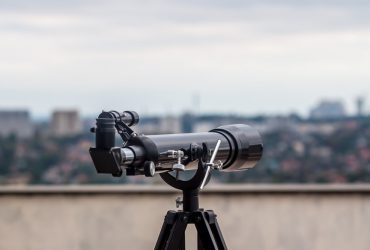
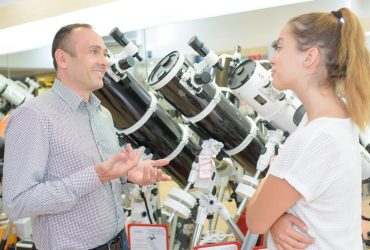
I am planning to buy Celestron binocular this one kindly help me out is it good for the Birding and hunting?
Celestron Trailseeker 8×42
Specifications
8x magnification
42 mm objectives
25 mm exit pupil diameter
17 mm eye relief
Fully multi-coated (FMC) optics
28 relative brightness
BaK-4 prisms with phase and dielectric coatings
8.1 degrees field of view
Limited lifetime warranty
Weight 1.45 pounds
“Not only will these Olympus 10×50 binoculars deliver crisp, clear and bright images, but the views that these binoculars afford almost seem to assume a 3D quality.”
Well, Jack, as they are binoculars then it actually *is* 3D, you plank.
In this way, don’t need to touch the shutter to cause
any movement on the camera. Hand holding
a camera limits the shutter speed you may use without receiving a blurred image.
Camera bags can be found in a lot of different shapes and sizes, so locating one
just right for you guessed it-your camera isn’t a trial to complete, and
getting a good video tripod is also a breeze to perform, so
anybody who would like to shoot professional videos like the professionals do, they are able
to get a tripod that will help them do it.